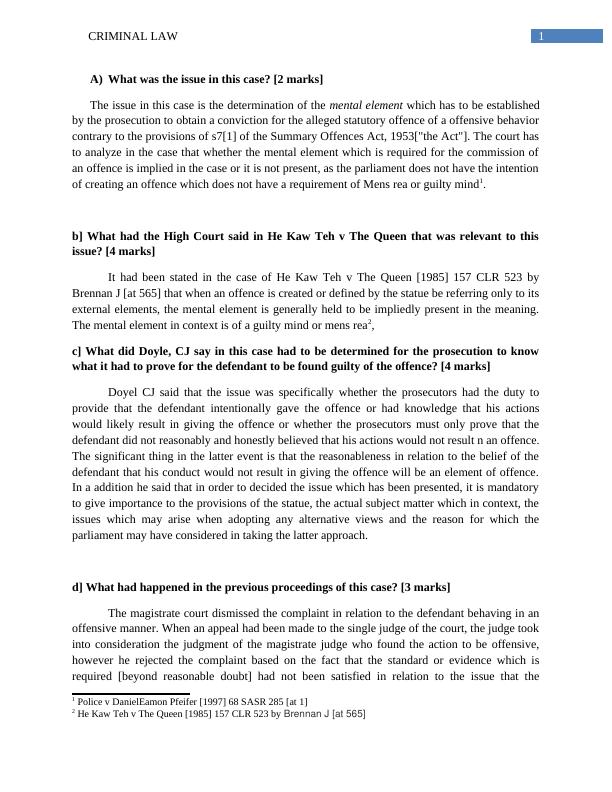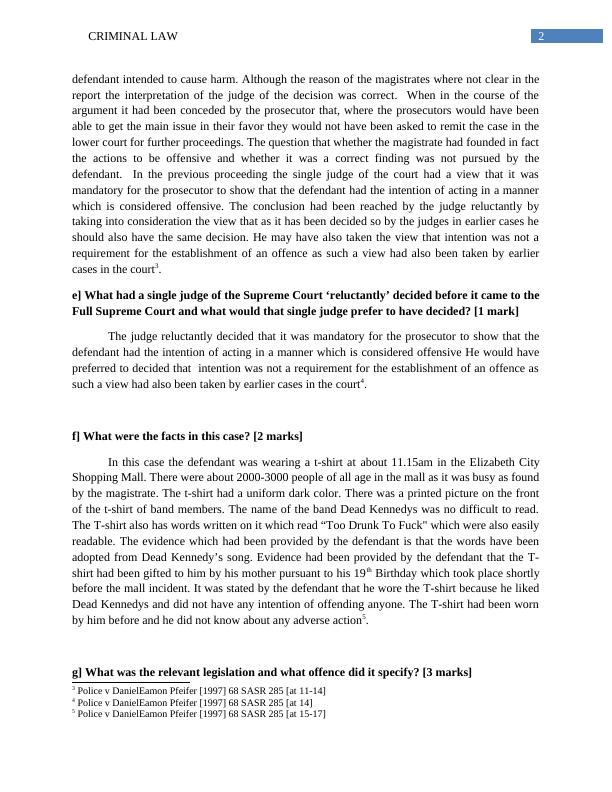Analysis of Criminal Law Case: Police v DanielEamon Pfeifer
Answering questions based on a South Australian Full Supreme Court case
7 Pages2708 Words405 Views
Added on 2023-06-14
About This Document
This article provides an analysis of the Criminal Law case Police v DanielEamon Pfeifer, which discusses the required mental element for the offence of offensive behavior under the Summary Offences Act, 1953. The article covers the issue in the case, relevant legislation, previous decisions, and the conclusion reached by Doyle, CJ. The subject is Criminal Law, and the course code and college/university are not mentioned.
Analysis of Criminal Law Case: Police v DanielEamon Pfeifer
Answering questions based on a South Australian Full Supreme Court case
Added on 2023-06-14
ShareRelated Documents
End of preview
Want to access all the pages? Upload your documents or become a member.
(PDF) Sexual Assault, Criminal Justice and Law and Order
|4
|1109
|193
Plea Bargaining: Definition, Types, Pros and Cons
|6
|1343
|132
Business Law Assignment - company Pegasus
|14
|3537
|438
CRIMINAL LAW. CRIMINAL LAW Name of the Student: Name of
|12
|3333
|39
Criminal Law: Insanity Defence, Automatism Defence, Murder vs Manslaughter
|13
|3422
|1
Burden of Proof in Criminal Cases: Evidential and Legal Burden Explained
|8
|3547
|94



